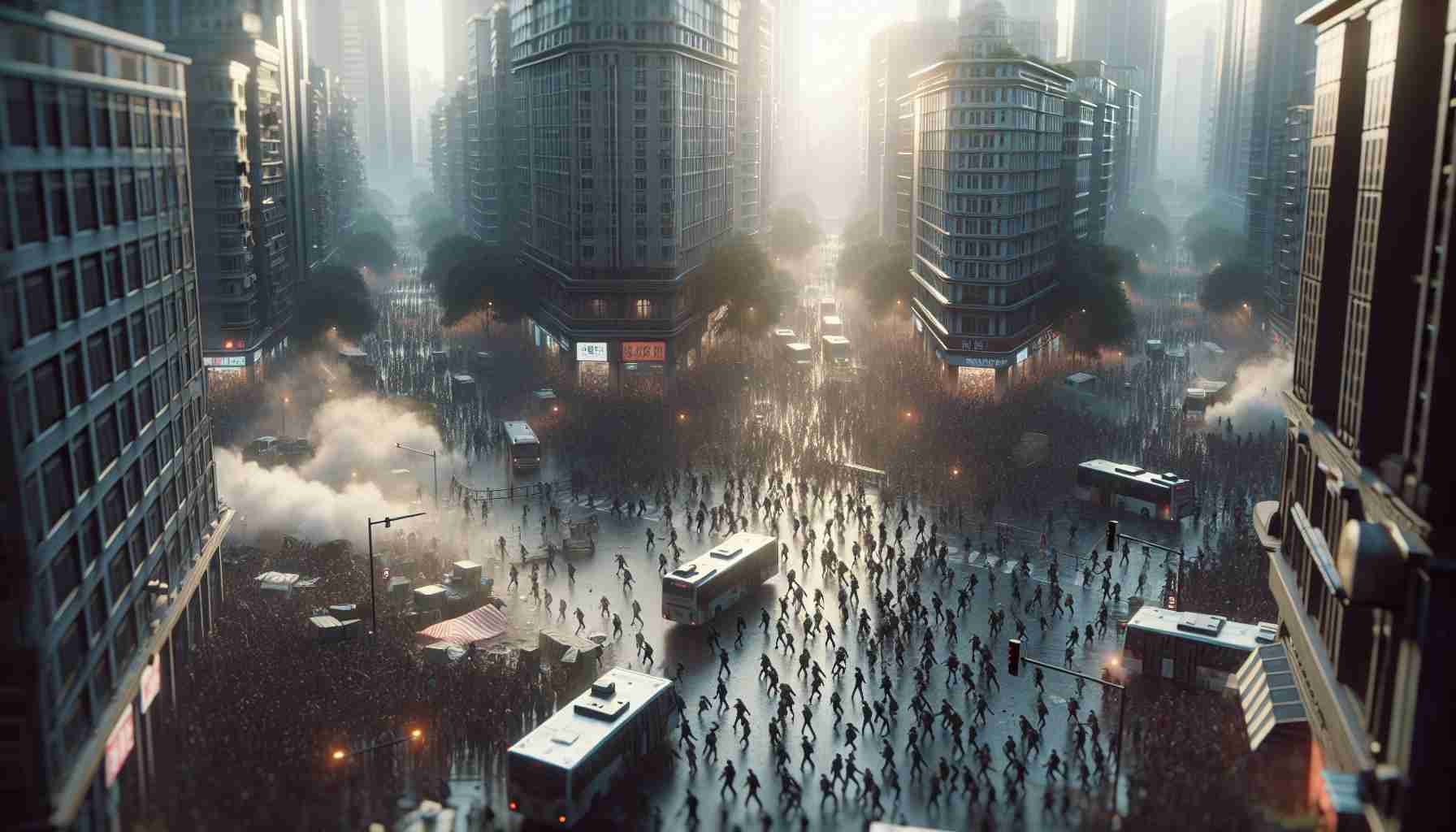Intense moments unfolded in Islamabad, the capital of Pakistan, as supporters of former Prime Minister Imran Khan protested. These demonstrations, advocating for Khan’s release, rapidly intensified, resulting in a violent clash with security forces near the capital’s significant government district, the “red zone.”
Authorities faced a tumultuous situation as protesters approached sensitive government sites. To disperse the crowd, police and army rangers resorted to tear gas and rubber bullets. Overnight, a major raid by security forces reportedly disbanded the gathering. Conflicting reports surround the casualty toll; official sources mention six deaths, including four paramilitary personnel and two protestors, although supporters allege hundreds more perished.
Social media platforms buzzed with purported evidence of the violence. However, many shared images and videos proved to be misleading. In several instances, evidence posted online was discovered to be AI-generated or contextually incorrect, misrepresenting the actual events in Islamabad.
Prominent images circulated falsely claimed to depict Jinnah Avenue stained with blood. However, a fact-check revealed these images did not match the avenue’s actual layout and bore distinct characteristics of AI-generated content, such as unnatural light sources and illogical shadow placement.
Another image, misattributed to the Islamabad protests, was in fact from Gaza. The dissemination of such inaccuracies underscores the challenges of verifying information in heated situations.
While the internet flooded with misinformation, genuine reports of serious injuries and unrest emerged, highlighting the volatile conditions throughout the capital city. Amnesty International urged the government to protect protestor rights amid escalating tensions.
Unveiling Digital Deception: The Dual-Edged Sword of AI in Protest Coverage
In an era where digital influence shapes our understanding of world events, the recent protests in Islamabad highlight the complex interplay between technology and truth. The digital landscape has become a battleground where AI-generated misinformation competes with authentic narratives, revealing both innovative possibilities and profound challenges that impact humanity and technological development.
The Role of AI in Modern Communication
AI technology offers tremendous advantages, from enhancing our online experiences to streamlining decision-making processes. However, its potential for misuse raises critical questions. When AI-generated content infiltrates news cycles, can we truly differentiate between reality and fabrication? This phenomenon became evident with the Islamabad protests, where AI-generated images and videos muddled public perception and obscured the truth.
The Advantages of AI-Generated Content
– Efficiency and Creativity: AI can rapidly produce content in various formats, from text to images and videos, allowing for quick dissemination of information. It also inspires creativity, enabling artistic expressions that were previously unimaginable.
– Resource Optimization: In media, AI can automate repetitive tasks, freeing up human resources for more complex and nuanced storytelling.
The Disadvantages and Controversies
– Misinformation Proliferation: As seen in Islamabad, AI can create incredibly realistic fake images and videos. This raises questions about accountability and the ethics of content creation and distribution.
– Erosion of Trust: The circulation of AI-generated misinformation can erode public trust in media outlets and social networks, complicating efforts to deliver factual news.
Technological Solutions and Ethical Considerations
Addressing these challenges requires innovative technological solutions and stringent ethical standards:
– Improved Verification Systems: AI should also be used to develop advanced verification tools capable of detecting synthetic content with high accuracy. This includes algorithms that analyze inconsistencies in lighting, shadows, and facial features.
– Ethical AI Development: Creating guidelines and legislation that govern the ethical use of AI in media will help mitigate its misuse. Transparency about AI-generated content is crucial for maintaining public trust.
Impact on Humanity and Society
While AI offers impressive advancements, the Islamabad protests highlight its darker implications. How does society adapt to a reality where trust in digital information is increasingly fragile? The answer involves cultivating digital literacy among populations, emphasizing critical thinking, and encouraging skepticism towards online information — skills essential for navigating today’s digital maze.
A Call for Global Cooperation
Solving the misinformation crisis demands global cooperation between technology companies, governments, and civil society. Joint efforts should focus on developing international standards and practices to govern AI’s role in our digital communications ecosystem.
As we continue to rely more on digital platforms for news and social interaction, the integrity and authenticity of information must remain paramount. Only through concerted efforts can we harness AI’s potential while safeguarding human interests.
For further insights into digital information and AI challenges, you might want to explore resources from BBC or The Guardian.
